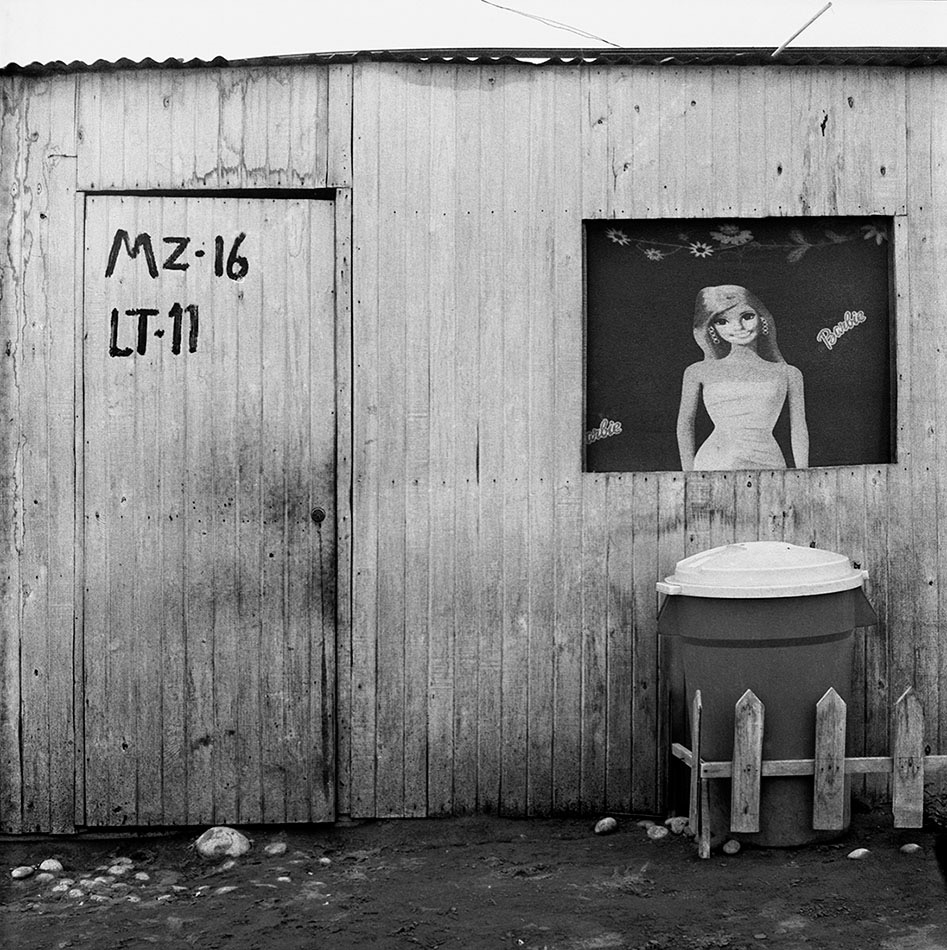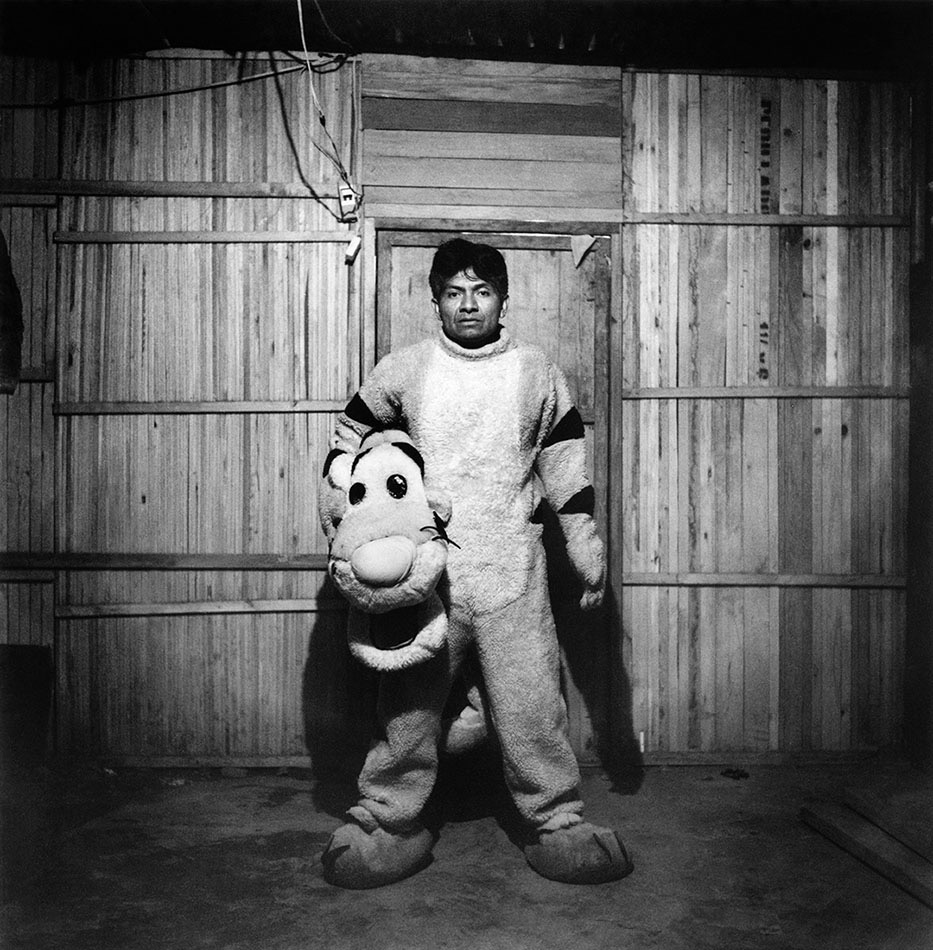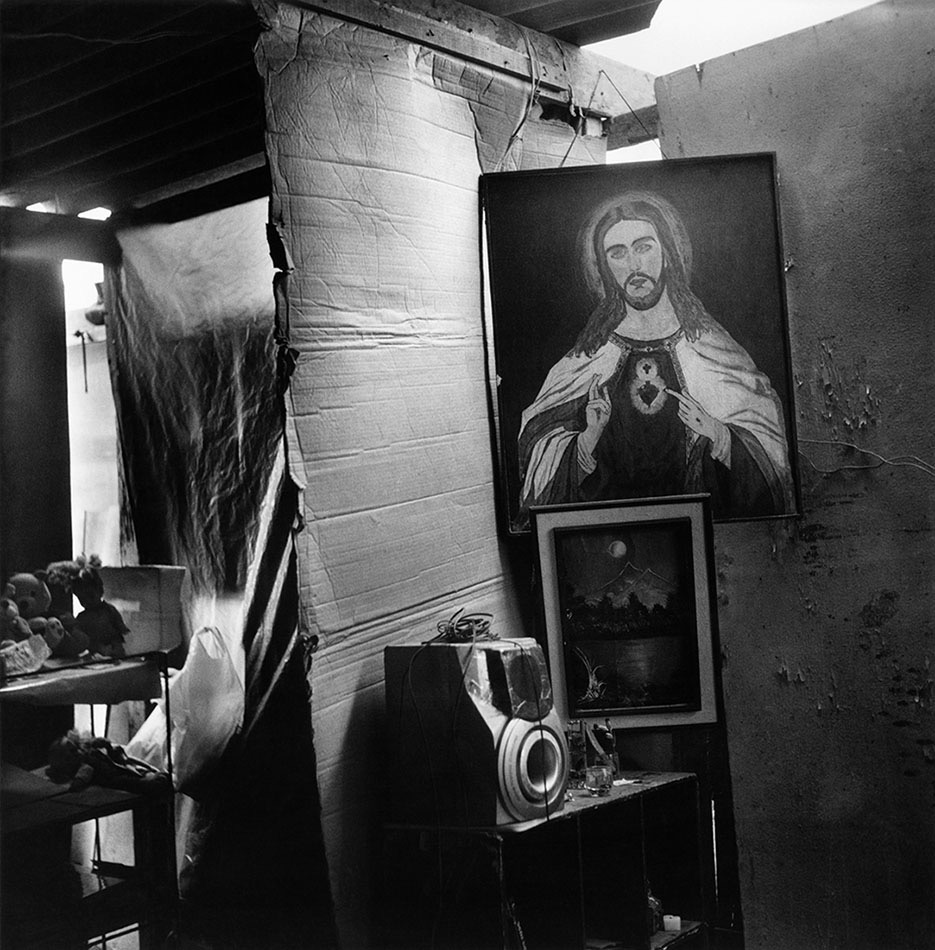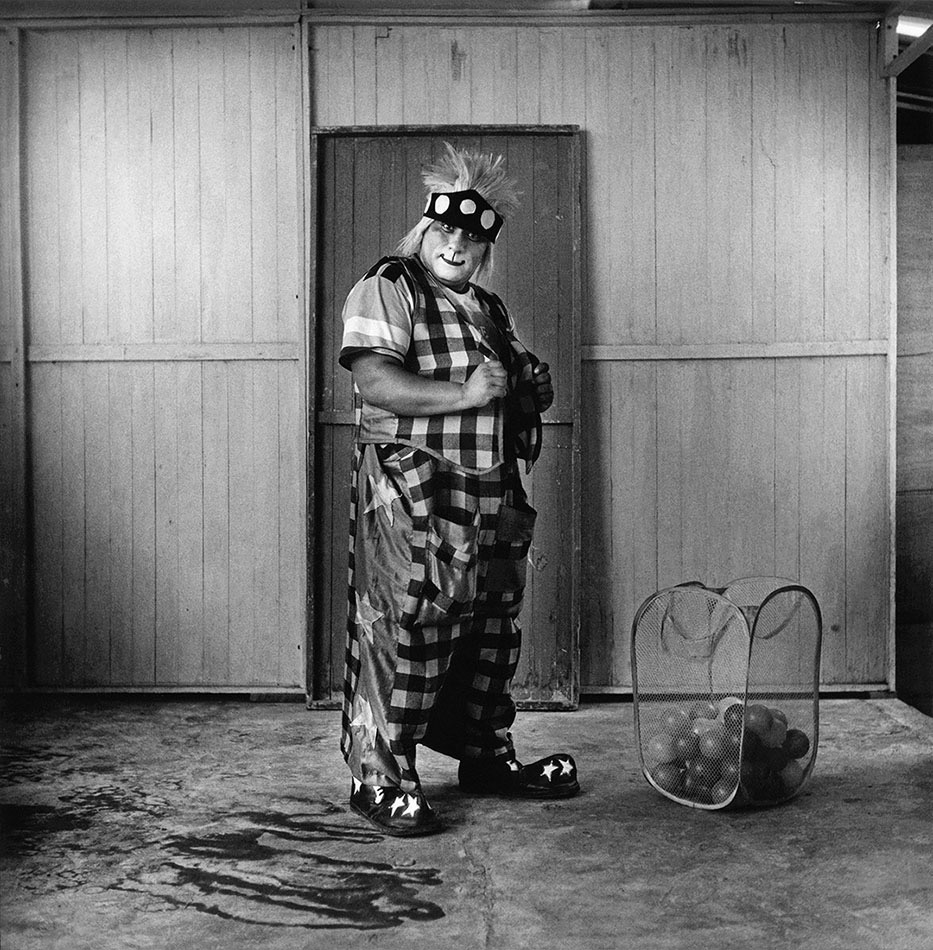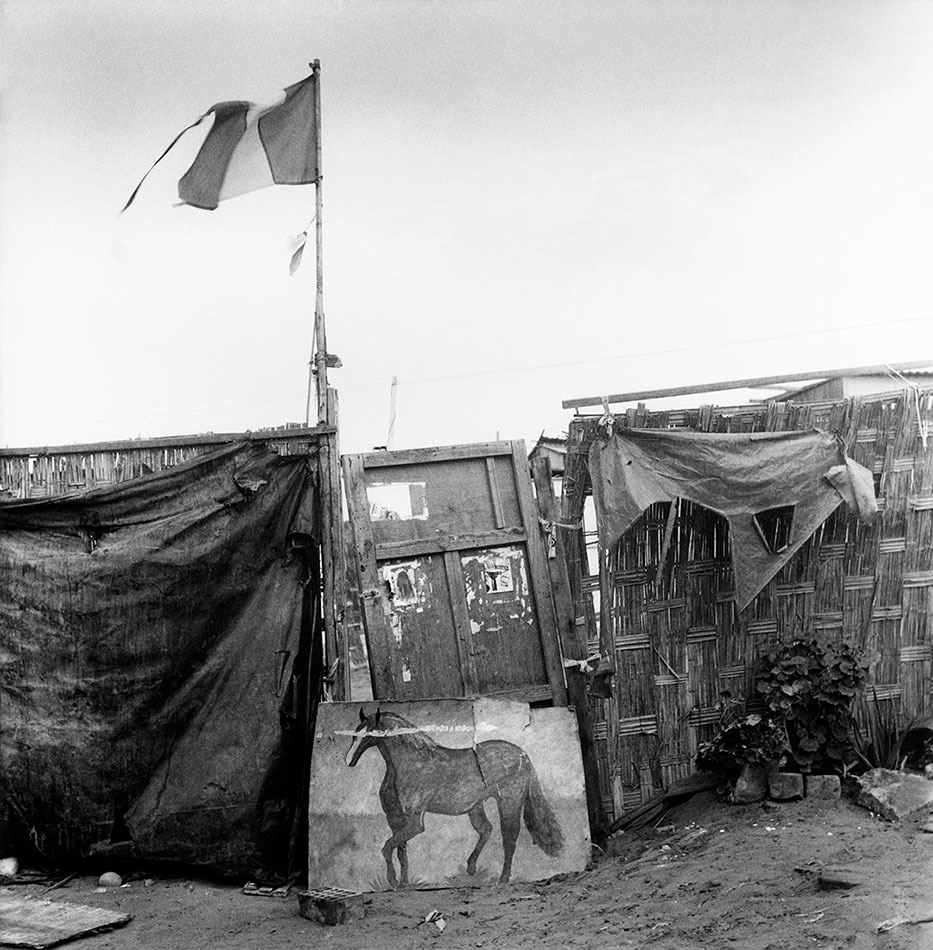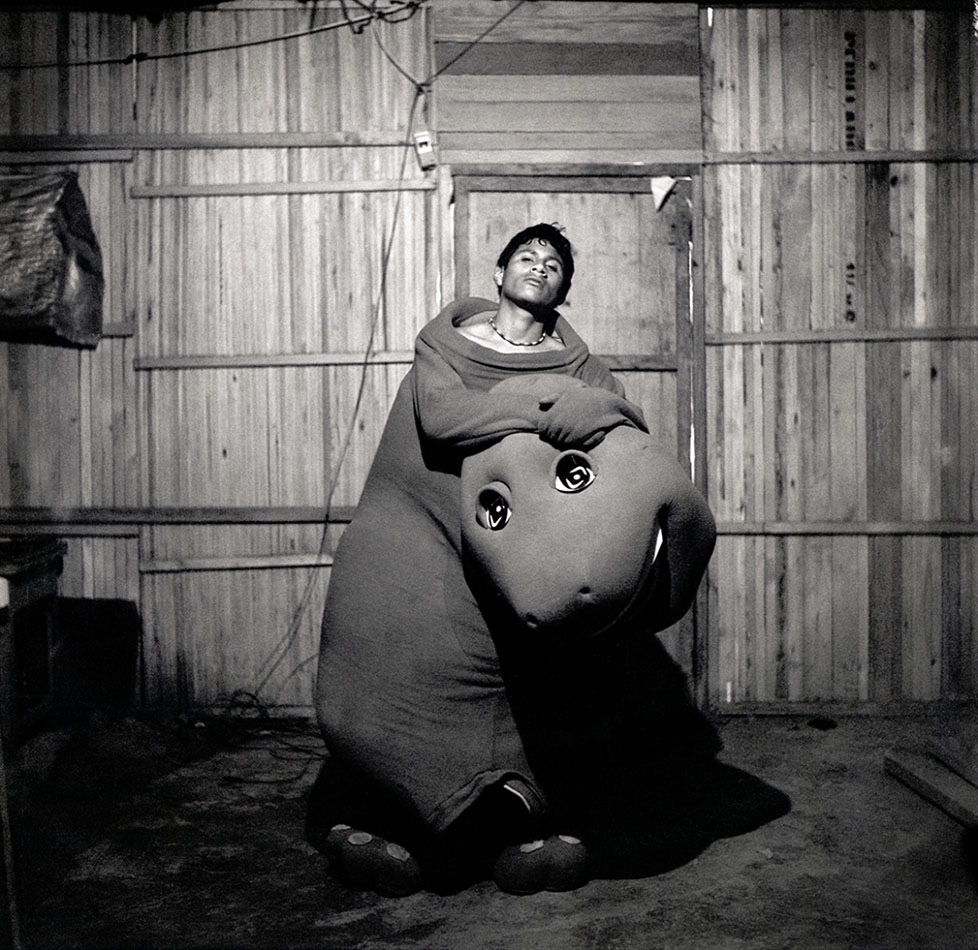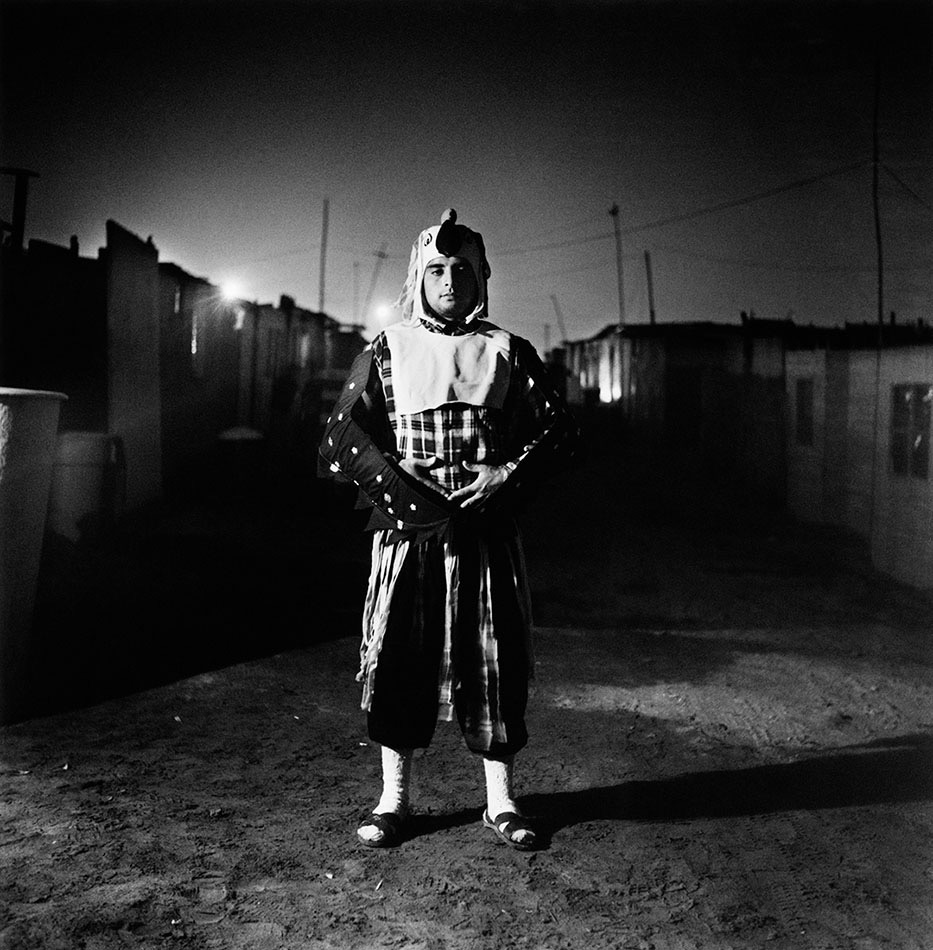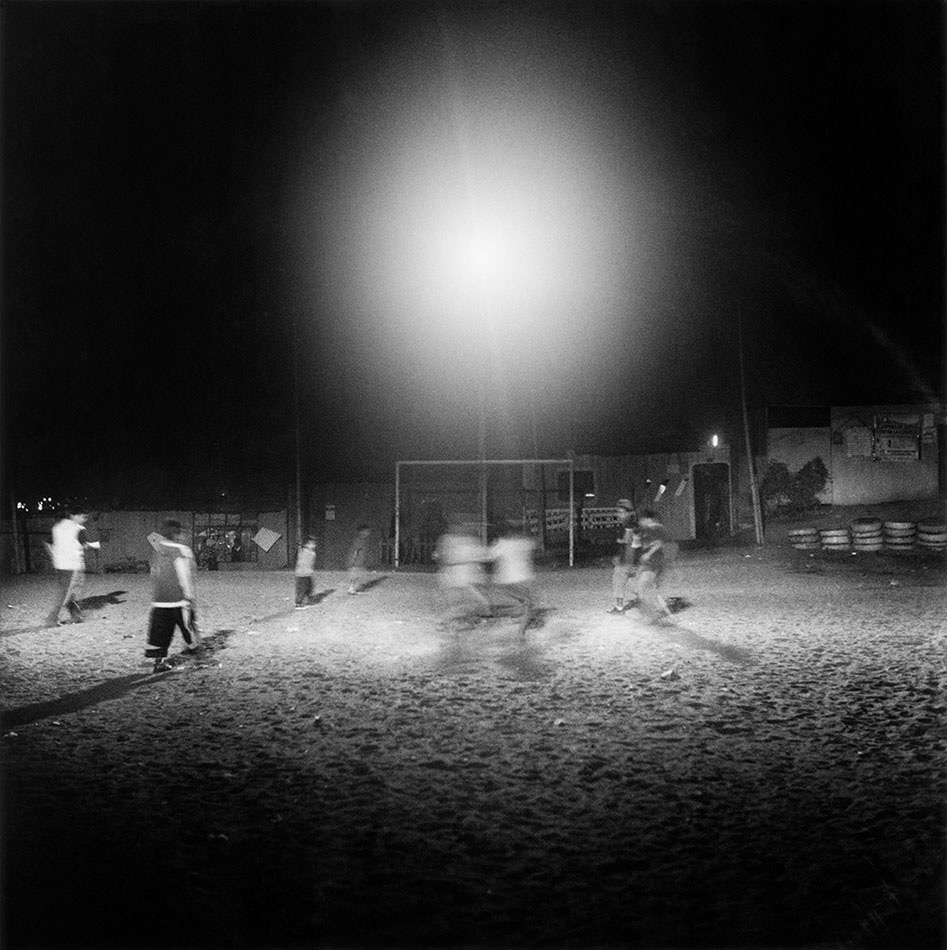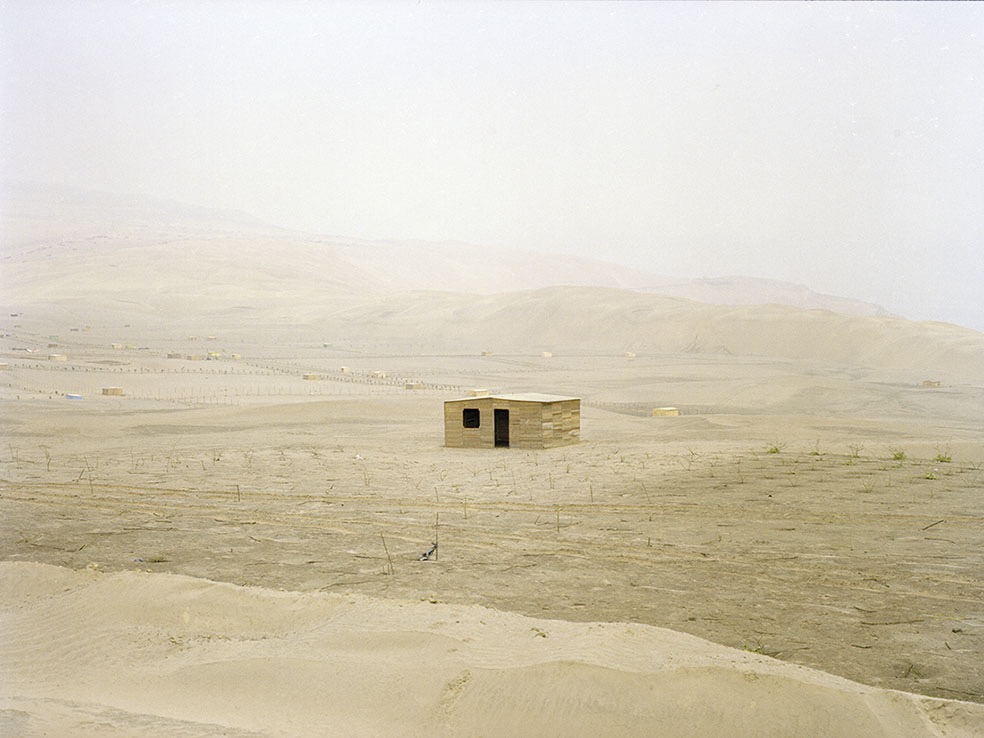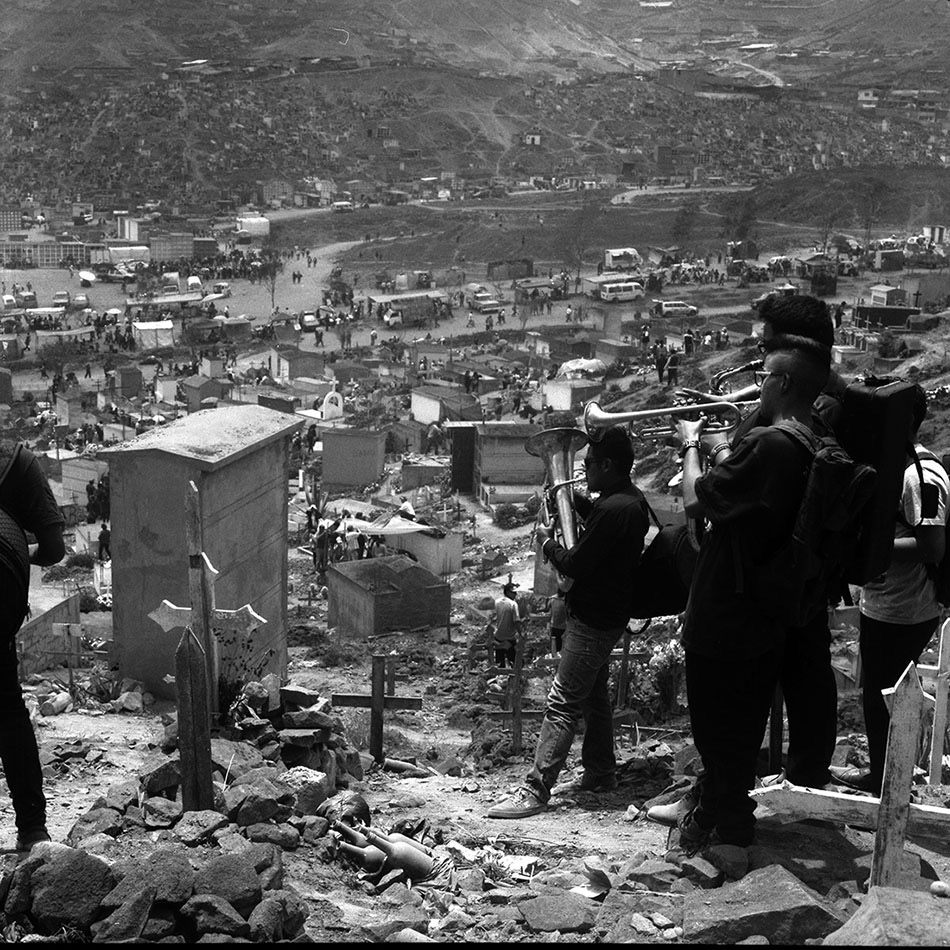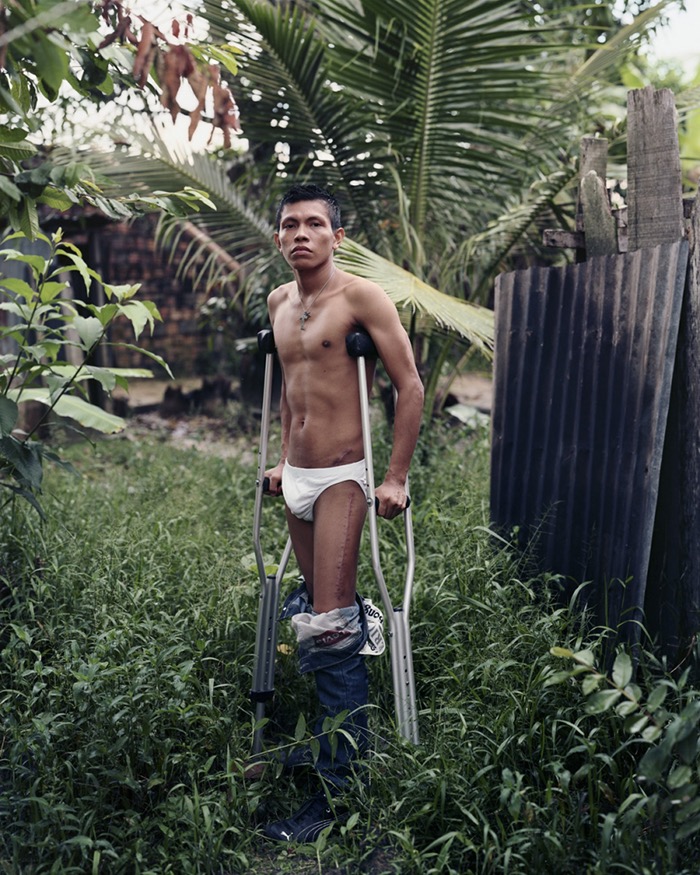The inhabitants of “Oasis” have built their life on an abandoned trash heap outside Lima. Ten years ago they simply took over the former dump in what is called an “invasion”. This is the euphemism Peruvians use to describe the technically illegal land grab of empty space in many areas of the country. The members of the community are classified in different groups that aim to build a structure to their social life. The Defence Command is a small army of hooded men who fight against local police forces, gangs and troubling residents; the Church Brothers and Sisters office open air baptisms using plastic swimming pools; the Furry Men work animating birthday and bachelor parties as well as local festivals; the Dancer Experience is a club comprised by all the artists devoted to folklore dances.
Invasions have become so common in Peru in past decades that the government has been forced to allow them. A law on the books in Peru essentially states that if someone occupies empty land for 10 consecutive years, they can petition to own it and build a house on it. Hundreds of communities have been built this way as millions of poor people fled the rural countryside seeking work and better lives in the nation’s capital. According to up date surveys of the World Bank 36,1% of the Peruvian urban population live in slums.
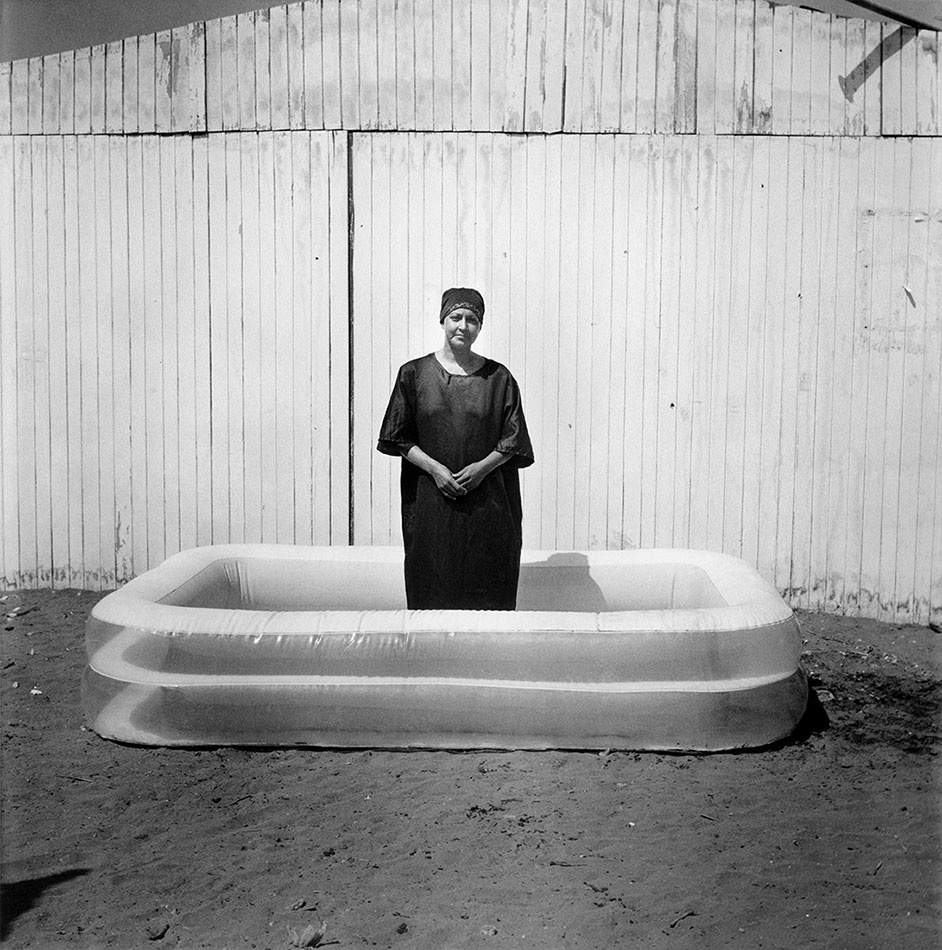
Says Paco: Born and raised in Lima, (Perú) my professional career started as a photojournalist for several Peruvian newspapers (Ojo, Correo and La República), magazines (Caretas, Etecé), and international news agencies (EFE and Reuters). By the time that I was working in EFE I kickstarted my career as an independent documentary photographer. One of my first initiatives in this field was the co-founding of the photo collective SUPAY FOTOS. In 2008 I won the Peruvian National Prize for Documentary Photography (Eugene Courret Prize). During the last ten years of my life I have been developing documentary essays about the contradictions of the human condition in my country. I work mostly personal photo projects based around topics like the nature of poverty, identity issues and marginalization. All my projects are self-financed. So far I have shown my work in three individual exhibitions: Family Album (K Galeria. Lisboa, Portugal 2009), Becoming Big (Encuentros Abiertos, Festival de la Luz. Buenos Aires, Argentina 2012) and Album Familiar (Centro Cultural PUCP. Lima, Perú 2017). My last photo endeavour is called ALBUM FAMILIAR, a ten year exploration of the evolution of poverty in the urban cities of Lima, Perú.
